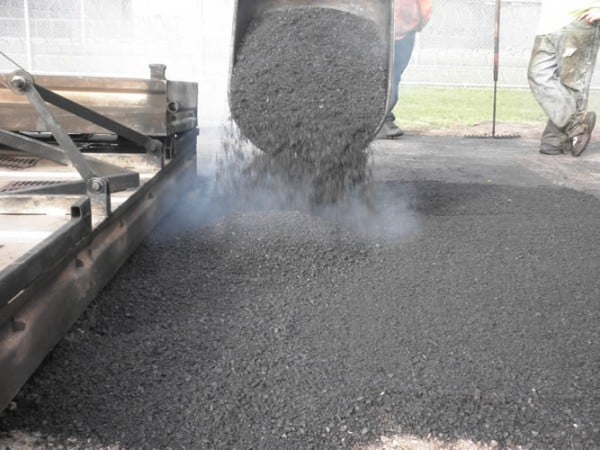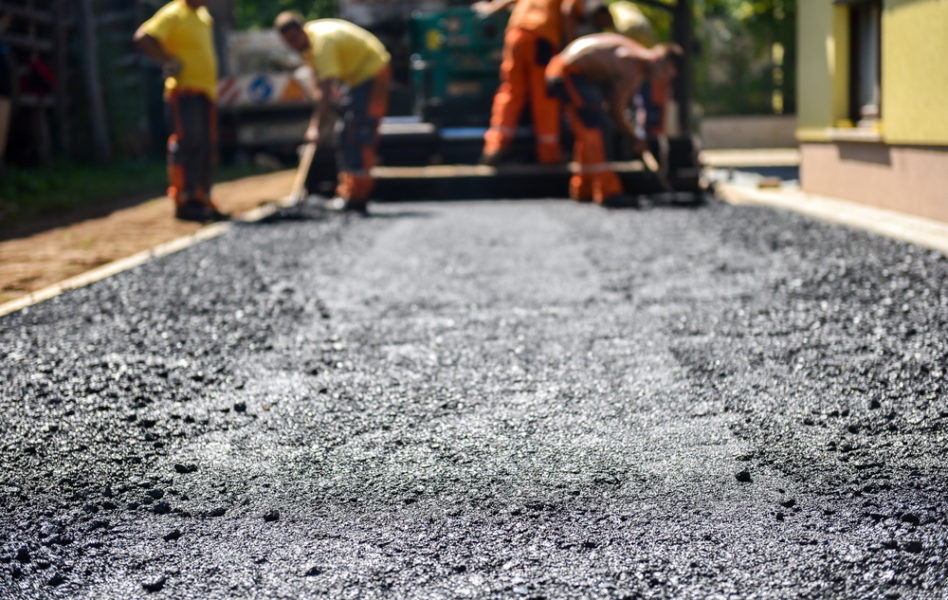Hot Mix Asphalt Paving: Elevating Commercial Parking Lot Standards
Hot Mix Asphalt Paving: Elevating Commercial Parking Lot Standards
Blog Article
Unlocking the Secrets of Hot Mix Asphalt Technology
Exploring the midsts of hot mix asphalt technology reveals a world where thorough processes and precise solutions converge to form our roads and framework. The combination of binders, fillers, and accumulations isn't simply a building and construction task yet a calculated orchestration of resilience and performance.
Significance of Warm Mix Asphalt
Hot Mix Asphalt plays a crucial function in modern facilities growth because of its longevity and cost-effectiveness. As the most generally used leading product for roads, freeways, and car park, Warm Mix Asphalt provides an array of benefits that contribute to its relevance in construction jobs. One vital advantage is its capability to hold up against rush hour lots and harsh climate condition, providing a lasting and trusted surface area for transport networks. Additionally, Hot Mix Asphalt is affordable in both first building and construction and long-term maintenance, making it a preferred option for lots of framework tasks.
The toughness of Hot Mix Asphalt stems from its structure, which includes aggregates, binder, and filler materials that are very carefully picked and mixed to meet details performance needs. On the whole, the significance of Hot Mix Asphalt in facilities advancement can not be downplayed, as it continues to be a cornerstone of modern construction methods.
Parts of Asphalt Mixes
The composition of asphalt blends contains meticulously selected accumulations, binder, and filler materials that are critical for accomplishing details performance needs. Aggregates are the main part of asphalt mixes, giving strength and security. These accumulations can be natural, such as gravel or smashed stone, or synthetic, like recycled products from old sidewalks. The binder, usually asphalt or asphalt cement, holds the aggregates with each other and gives flexibility and longevity to the mix. The selection of the binder is vital as it straight influences the mix's performance in different climate problems. Fillers, such as hydrated lime or Portland cement, are utilized to boost the mix's workability and aging resistance. Angled Parking.
The mix and percentage of these elements play a substantial duty in establishing the top quality and efficiency of the asphalt mix. Designers meticulously make the mix to fulfill details needs, taking into consideration variables like website traffic quantity, environment conditions, and pavement lifespan. Proper option and harmonizing of accumulations, binder, and fillers are necessary for producing long lasting, lasting asphalt sidewalks.
Mixing and Production Techniques

As soon as the accumulations are picked, the binder, often asphalt cement, is contributed to bind the materials together. The binder's quality and quantity considerably impact the mix's stamina, versatility, and resistance to ecological aspects. Furthermore, fillers like hydrated lime or Portland cement might be included to improve certain attributes of the asphalt mix, such as its workability or wetness resistance.
During production, the accumulations and binder are heated up, usually between 250-325 ° F(121-163 ° C ), to facilitate blending and make certain appropriate finishing of the aggregates. The blending procedure should be comprehensive to achieve an uniform blend that promotes the wanted efficiency qualities of the asphalt. Numerous methods, such as batch blending or drum mixing, are employed to attain constant and high-quality try here asphalt mixes for building and construction jobs.
Factors Influencing Asphalt Performance
Elements affecting asphalt efficiency encompass a variety of variables that influence the resilience, durability, and total quality of asphalt pavements. One crucial factor is the quality of materials made use of in the asphalt mix.

Ecological conditions likewise influence asphalt efficiency. Temperature level variations, dampness infiltration, and web traffic loads can all affect the architectural integrity of the sidewalk. Design factors to consider, such as sidewalk thickness and drain, are essential in making sure the long-term performance of the asphalt sidewalk. By carefully thinking about these designers, factors and contractors can enhance asphalt efficiency and boost the life span of pavements.
Lasting Practices in Asphalt Modern Technology

In addition, the growth of warm-mix asphalt (WMA) innovations has gained grip over the last few years. WMA enables for the production and placement of asphalt blends at lower temperatures contrasted to standard hot-mix asphalt, leading to decreased power intake and greenhouse gas discharges. The usage of porous asphalt blends can assist mitigate stormwater drainage problems by permitting water to infiltrate through the sidewalk and into the ground, advertising natural water purification and charge procedures. By executing these lasting methods, the asphalt sector can add to constructing a much more durable and eco friendly framework network.
Final Thought
Finally, hot mix asphalt technology plays an important function in modern-day framework growth due to its resilience and cost-effectiveness. By thoroughly balancing elements, utilizing appropriate blending methods, and taking into consideration different variables, engineers can produce top quality asphalt mixes that endure rush hour loads and severe weather conditions. Embracing sustainable techniques, such as making use of recycled products and warm-mix modern technologies, even more enhances the environmental kindness of asphalt modern technology.
Blending and production techniques in warm mix asphalt modern technology include the accurate combination and handling of accumulations, binder, and fillers to create a high-performance and sturdy asphalt mix.Variables affecting asphalt performance incorporate a variety of variables that impact the durability, long life, and general quality of asphalt sidewalks. Sustainable practices in asphalt modern technology include various campaigns aimed at lowering the ecological impact of asphalt manufacturing and paving processes. By including recovered asphalt pavement (RAP) and recycled asphalt roof shingles (RAS) into brand-new asphalt link mixes, the market can considerably lower the usage of raw products and energy, while additionally reducing land fill waste.
WMA enables for the manufacturing and placement of asphalt blends at lower temperatures contrasted to conventional hot-mix asphalt, resulting in lowered energy intake and greenhouse gas emissions.
Report this page